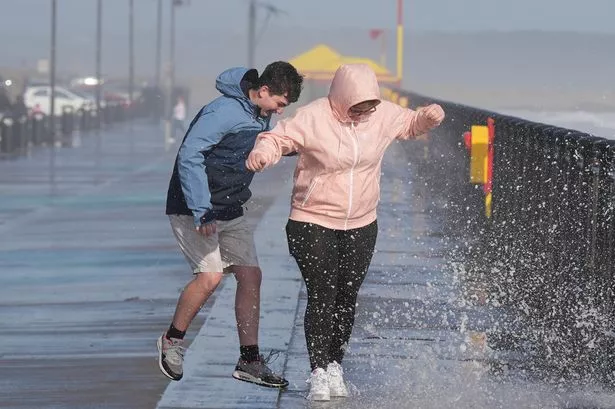A potent storm system is poised to unleash its fury upon the nation on New Year’s Eve, bringing with it a deluge of heavy rain and ferocious winds, threatening to disrupt celebrations and usher in the new year with a display of nature’s raw power. Meteorologists predict rainfall rates reaching a staggering 7 centimeters per hour in certain regions, a volume capable of overwhelming drainage systems and triggering localized flooding. Coupled with these torrential downpours are anticipated wind gusts exceeding 70 miles per hour, strong enough to topple trees, damage power lines, and pose a significant hazard to travel. Coastal areas face the added threat of storm surge and coastal erosion, compounding the risks associated with this powerful weather system. Emergency services are on high alert, urging residents to prepare for the impending storm and exercise extreme caution.
The storm’s intensity arises from a complex interplay of atmospheric factors, including a deep low-pressure system, abundant moisture, and strong upper-level winds. This combination creates an environment ripe for the development of intense precipitation and powerful gusts. The low-pressure center acts as a focal point, drawing in vast quantities of moisture from warmer ocean waters. As this moist air rises and cools, it condenses, forming towering thunderclouds capable of producing torrential rain. Meanwhile, the strong upper-level winds enhance the storm’s overall circulation and propel the rain-laden clouds rapidly across the landscape. The resulting combination of heavy rain and strong winds presents a multifaceted threat, impacting infrastructure, transportation, and potentially human lives.
The heavy rainfall anticipated carries the risk of widespread flooding, particularly in urban areas with limited drainage capacity. Flash floods, characterized by their rapid onset and destructive power, pose a particular danger in low-lying areas and near rivers and streams. As rainwater accumulates quickly, it can overwhelm drainage systems, leading to overflowing sewers, inundated streets, and flooded basements. Such flooding can disrupt transportation, damage property, and even pose a threat to life. Rural areas are also susceptible to flooding, with fields becoming saturated, potentially impacting agricultural operations and causing damage to crops.
The powerful winds accompanying the storm present an additional layer of hazard. Gusts exceeding 70 miles per hour can snap tree branches, uproot entire trees, and damage power lines, leading to widespread power outages. Falling trees and debris pose a significant risk to both property and human safety. High winds can also make driving conditions treacherous, especially for high-profile vehicles, increasing the risk of accidents. Coastal regions face the added threat of storm surge, as strong winds push seawater further inland, exacerbating flooding and erosion along the coastline.
Preparations are underway across the country to mitigate the storm’s impact. Emergency services are mobilizing resources, ensuring personnel and equipment are strategically positioned to respond to potential emergencies. Utility companies are bracing for potential power outages, deploying crews to address downed power lines and restore electricity as quickly and safely as possible. Transportation authorities are monitoring the situation closely, prepared to implement closures or detours if necessary. The public is urged to heed warnings issued by authorities, secure loose objects outdoors, and prepare emergency kits with essential supplies such as water, food, flashlights, and batteries.
In anticipation of the severe weather, many New Year’s Eve celebrations have been altered or cancelled to prioritize public safety. Outdoor events are being moved indoors or postponed, and travel is discouraged unless absolutely necessary. The storm serves as a stark reminder of the power of nature and the importance of preparedness. As the nation braces for the impending impact, the focus remains on ensuring the safety and well-being of all residents and minimizing the disruption caused by this formidable New Year’s Eve storm. The hope remains that the new year will dawn with calmer weather and a renewed sense of resilience in the face of nature’s challenges.














